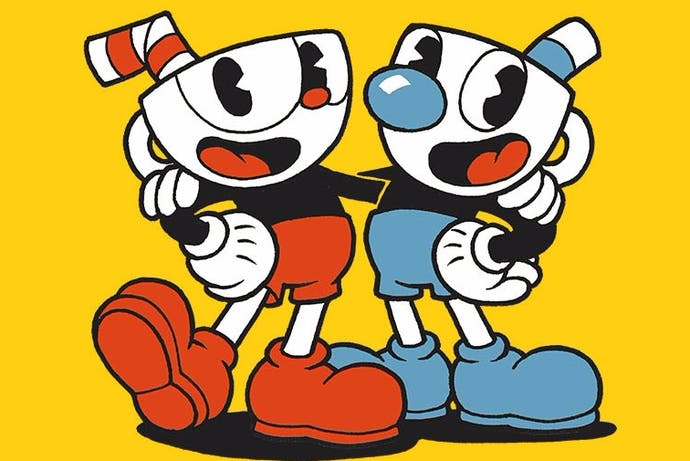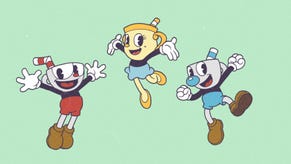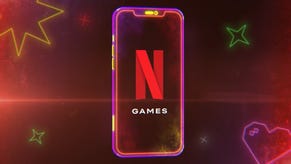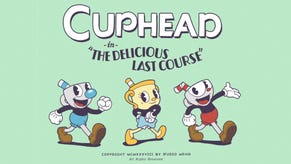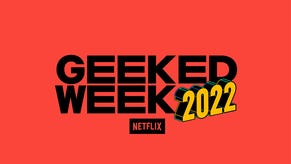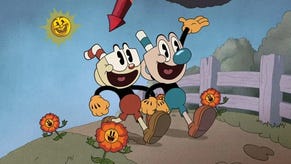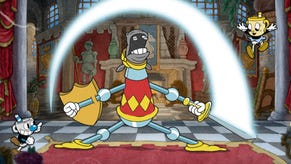Digital Foundry: how Cuphead takes retro to the cutting edge
A unique and exceptional achievement.
Retro gameplay meets vintage aesthetics in what is, for our money, a dream combination. With a sense of style and flair that we've never really seen before, Cuphead manages to combine unique audio-visuals with classic gaming action in an exceptionally cool, cohesive package. Controversy surrounds aspects of its gameplay, but after a week of play, we're converted: in an age of me-too software, Cuphead stands apart from the pack. We've played the game on Xbox One and PC, and while the UWP Windows Store code has frustrating issues, the console and Steam releases come highly recommended.
Cuphead has been a long time coming. First starting development back in 2010, the development team started out with just three people before eventually expanding to nearly 20 by the time it shipped. The inspiration is clear - Cuphead is designed to channel the look of classic 1930s American cartoons, but digitally recreating this look didn't quite work. Instead, everything you see in Cuphead has been animated and inked on paper using traditional methods with the resulting art digitised for use in the game. Colorisation is handled digitally but everything else about the game is entirely handcrafted and it shows.
To top it off, each of the games backgrounds are hand-painted water colours with various separate layers that scroll independently to create that parallax look. Taken together, the look is cohesive, richly animated and exceedingly uncommon. The re-release of Wonder Boy: The Dragon's Trap is the only modern example we can think of with a similar idea behind its visuals, but this is on another level.
What makes Cuphead so unique lies in its stylistic choices - 1930s animation has a very specific look, and not one we often see in games. When Studio MDHR set out to make this game, the objective was to design something unlike any other title on the market and in that sense, they have succeeded completely. When everything comes together, the results are pure magic.
With its fantastical design, what might surprise you is its core - Cuphead is a Unity game - and in the process it's a title that obliterates the notion that an engine predefines a certain style. However, Cuphead was originally created with the XNA Framework - a now obsolete set of tools designed to enable smooth development for Xbox 360 and Windows. In early 2014, the team made the switch to Unity to facilitate multi-platform development, while easing the development process. This wasn't the only major change either - after Cuphead received such positive attention from fans and the media, the team decided to expand the concept to create a larger game. After all, Cuphead was created as a boss rush game with eight selectable foes but the final game features more than 17 boss fights and six side-scrolling action stages.
When looking at the presentation, the sheer quality and quantity of artwork is staggering - and there's a strong argument to say that Cuphead can't really be analysed in the way that we usually break down image quality in gaming. Interestingly, if you load up the game on PC, Cuphead defaults to just 720p scaled up to your monitor resolution. Jump up to a higher resolution, however, and basically, there is no visible difference. It's not entirely clear what resolution the individual pieces of artwork are mastered at, but it ultimately doesn't matter as the end results are so effective.
This base artwork is then coupled with a post-process pipeline designed to create that authentic 30s animation vibe with dirty film stock and projection flaws. Grain, tiny hairs and other debris flash across the screen during gameplay while colour separation simulates the look of a low-quality projector lens - perhaps one of the few times when chromatic aberration makes a lot of sense. For those that dislike it, however, this can be dialed down in the options. Still, the goal here is to create something that looks very analog in nature. The softness of each frame coupled with these post effects is completely effective in achieving this.
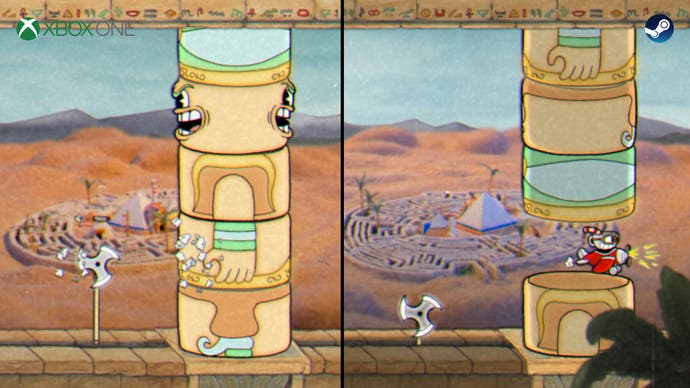
As you might suspect then, there is no real visual differences between the Xbox One and PC versions of the game. The core artwork is identical and both look fantastic in motion. Based on what we're seeing here, you shouldn't expect any kind of graphical boost on the upcoming Xbox One X. Playing on PC does offer a palpable advantage though: loading times are vastly improved over Xbox One, where the need to stream in new data is frequent and a touch annoying. Loading isn't eliminated on PC, but it's vastly improved. At the very least though, all versions offer instant response when selecting the 'retry' option - an option you'll be using frequently if you use up too many hit points early on in a stage.
Performance wise, Cuphead excels. While the animation itself is designed to simulate a lower frame-rate, the game plays out at a full 60 frames per second resulting in smooth, fluid motion with only the most minor of hiccups on Xbox One. The Steam version is also solid but reading over the Steam forums, it does seem that some users have run into issues with stuttering or locking to the wrong refresh rate so take caution. Cuphead ran beautifully on a range of hardware here at Digital Foundry - we enjoyed a nigh-on flawless experience running the game on a Dell XPS 13 notebook using integrated graphics on a low-power Core i5 5200U, with only minor stutter when playing off-mains (where GPU clocks are reduced).
The Steam version is solid, but the Windows Store UWP edition caused us genuine issues, with gameplay riddled with stutter - we measured frequent, sustained 180ms pauses during gameplay on a high-end machine with a Core i7 5820K paired with a Titan Xp, the fastest single-chip GPU on the market today. The stutter is reduced in windowed mode but who wants to play in a window? Beyond that, with multiple monitors enabled, we ran into plenty of freezes and other weirdness with this version to the point where rebooting the PC was the only fix.
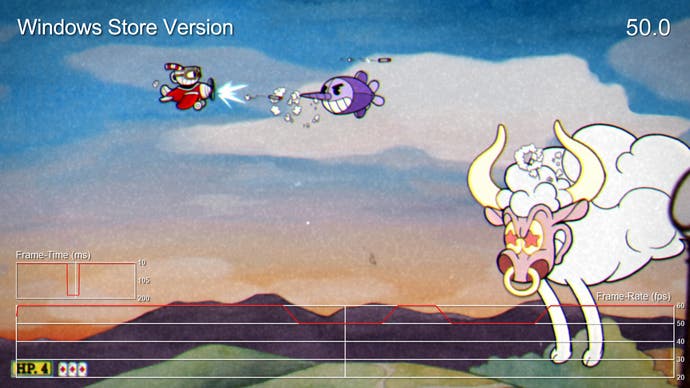
Xbox One owners can try this version of the game themselves on their PCs as the game is available to download from the Windows Store for free as part of the Xbox Play Anywhere initiative. We gave it another shot on a Surface Book and ran into the same stuttering issues. We're not quite sure why the Windows Store continues to deliver own-goals like this, but something needs to be done.
Gameplay-wise, it's fairly easy to describe the kind of experience you're likely to get with the game and it all comes down to how you perceive Cuphead's difficulty level. Is it a hard game? Well, yes and no. For those of us into retro gaming, Cuphead is average in this regard and a ton of fun as a result. Each stage is relatively short, you have infinite lives and the game is based on simple pattern recognition. If you don't typically play this sort of game, however, it might prove difficult - up against retro titles like Contra: The Hard Corps, The Adventures of Batman and Robin or Gradius 3 arcade, Cuphead is a walk in the park. But for those used to modern game elements like checkpoints, Cuphead may prove challenging and immensely frustrating.
In our opinion, Cuphead is a great-looking game and mostly runs well but what makes all this more impressive is how core gameplay is not unduly compromised by the aesthetics. In the past, games with a heavy focus on bespoke art direction often give animation priority over controller response, leading to somewhat clunky gameplay but that's not the case here. Cuphead and Mugman react immediately to every button press, offering a level of precision that you typically only find in classic run and guns. We were skeptical going in, but after getting the hang of it, it's clear that the team has nailed the feel.
On top of that, the animation itself still manages to play a role in the game design. The expressive nature of each enemy means that they're easy to read, even when you're focusing on another portion of the screen. Each attack is associated with an obvious tell which informs the player of what's to come - once you 'sync' with the game's mechanics, it becomes a whole lot easier. We've got just one further word of advice: standard control mapping isn't great. We'd advise moving the dash function to the right shoulder button - it's an essential function and not so easily accessible on the default Y button.
Overall, however you come down on the difficulty issue, our view is that Cuphead offers both rock-solid gameplay and beautiful visuals - and if you're familiar with retro run and gun titles, you'll get a massive kick out of this game. And even if you aren't, it's so unique and fascinating that we'd still recommend giving it a shot any way.
Studio MHDR has confirmed that there'll be no PS4 version, though the title may appear on Mac and Linux further on down the line. From our perspective, the lack of any other Cuphead console port is a shame. The fact that the Steam version runs beautifully on a low-power ultrabook proves that this title could scale beautifully to many systems, including Nintendo Switch, which could conceivably offer the full-fat experience. Hopefully Cuphead will return in a sequel with a full platform roll-out.
